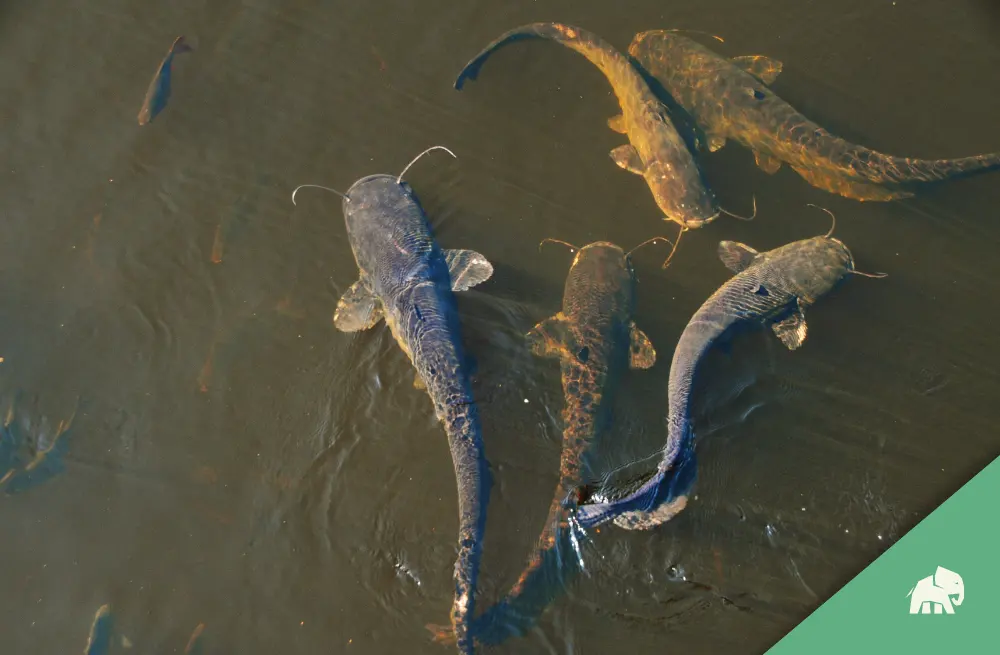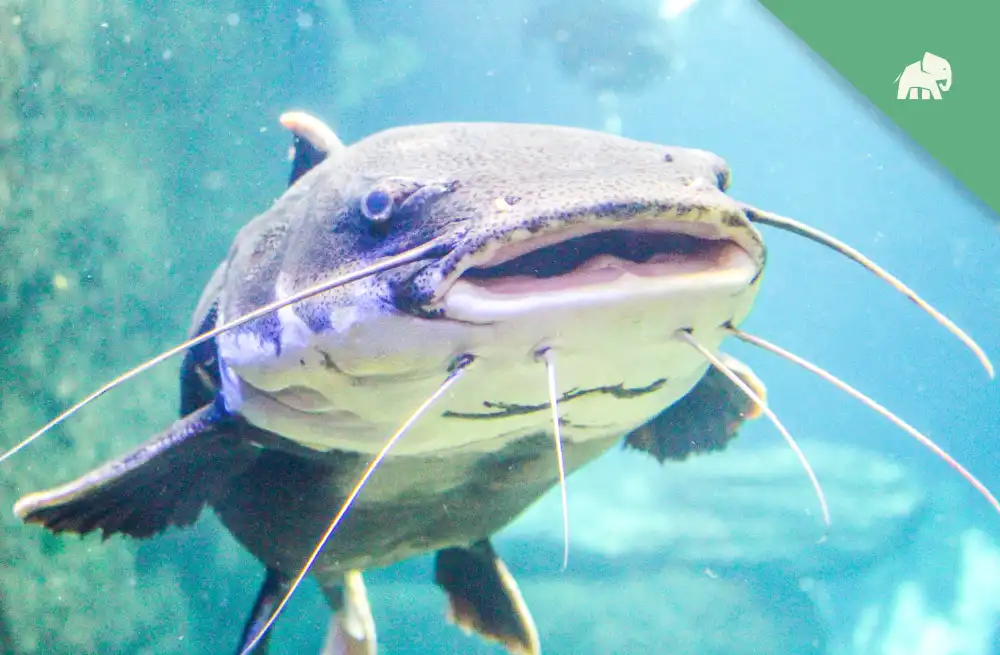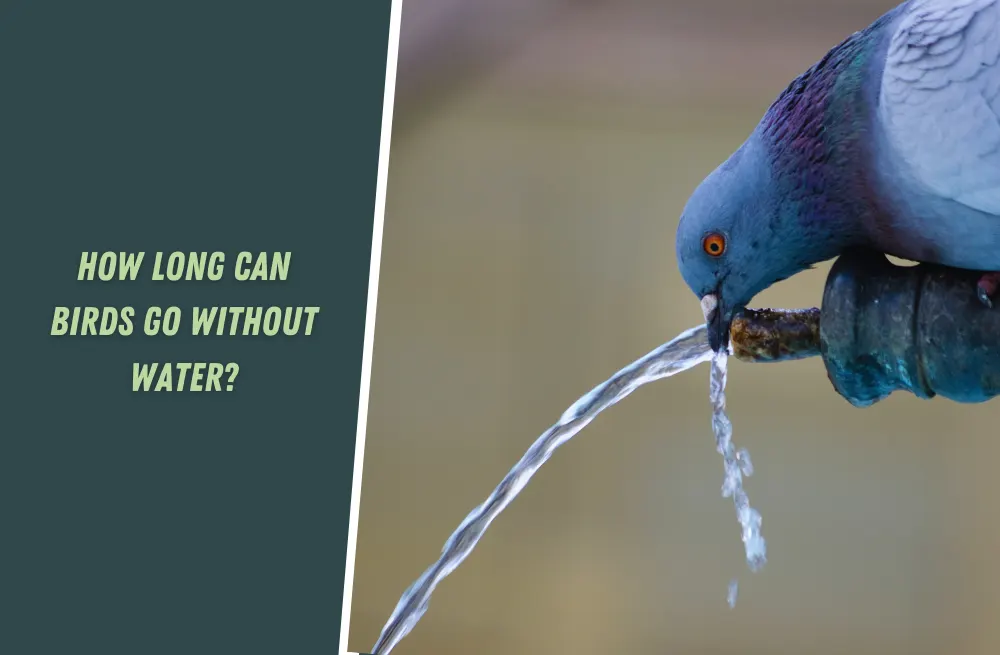Monkeys are fascinating creatures that have captured our attention for centuries. As with all animals, it is important to understand how long they live and what factors can affect their lifespans.
This information can be useful for researchers studying monkey populations and for individuals interested in taking care of them.
There are a variety of factors that can influence monkey lifespans, such as species, diet, and habitat.
For example, different monkey species have different lifespans, with some living longer than others. In addition, a monkey’s diet can impact its overall health and lifespan, as can its habitat and living conditions.
Do monkeys age differently from humans?
Yes, monkeys age differently from humans, although they experience many of the same age-related changes in their bodies and brains. Monkeys also have different lifespans and reach maturity at different ages than humans.
Monkeys tend to have shorter lifespans than humans and typically age at a faster rate. For example, a monkey that is 10 years old may be considered equivalent in age to a human who is in their 50s or 60s.
Fun fact: Some monkeys have opposable thumbs, which allow them to grasp and manipulate objects just like humans.
The Life Cycle of a Monkey
Monkeys go through several distinct stages throughout their life cycle, from birth to old age. Here are the typical stages and notable behaviors or milestones that occur during each stage:
Infancy
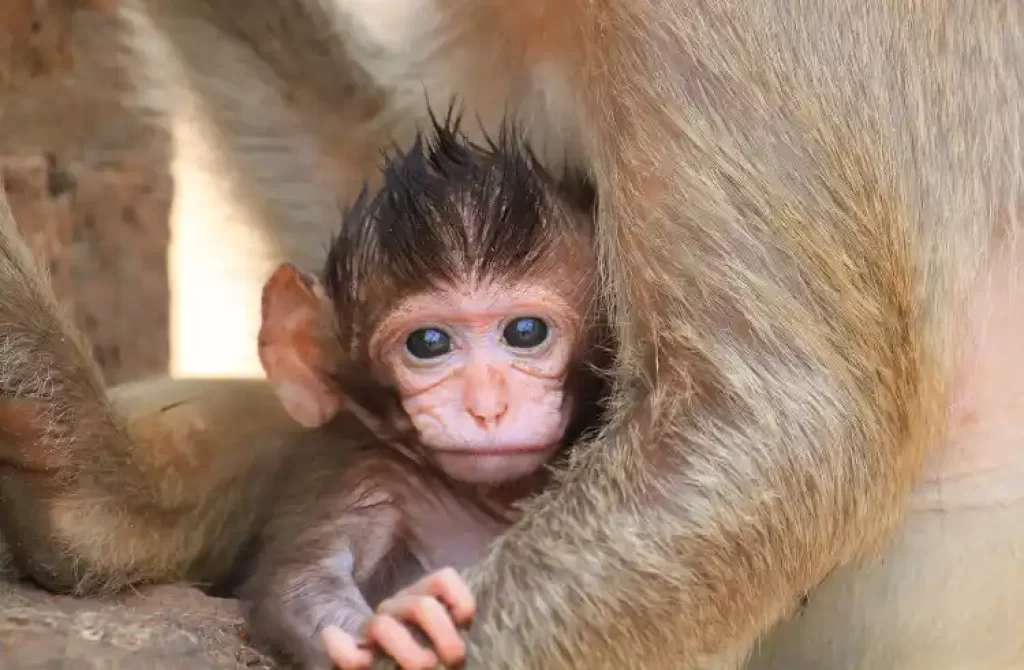
The first few months of a monkey’s life are spent clinging to its mother’s belly and nursing. The infant monkey is completely dependent on its mother for food, warmth, and protection. During this stage, the mother may exhibit protective behaviors such as carrying the infant close to her body and grooming it frequently.
Juvenile

As the monkey grows, it becomes more independent and begins to explore its environment. Juvenile monkeys may start to play with their siblings and other young monkeys, learning important social skills that will serve them later in life.
They may also begin to sample solid food, although they will continue to nurse for several months or even years.
Adolescence
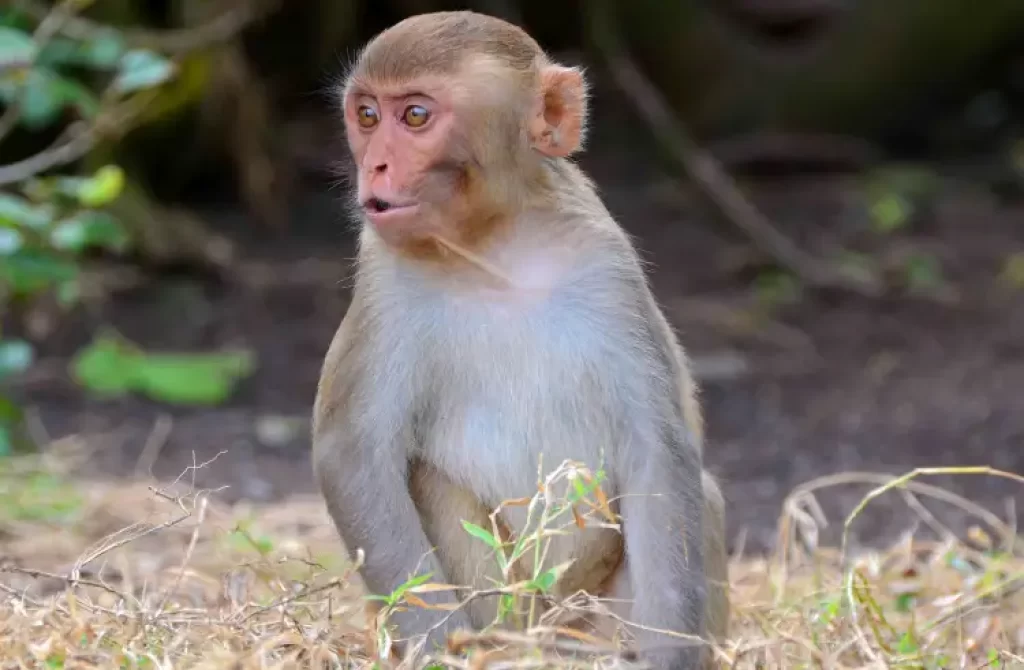
In adolescence, monkeys become sexually mature and may start to exhibit mating behaviors. Male monkeys may compete with one another for access to females, while females may choose mates based on factors such as strength and social status.
Adolescents may also begin to form their own social groups, separate from their natal group.
Adulthood
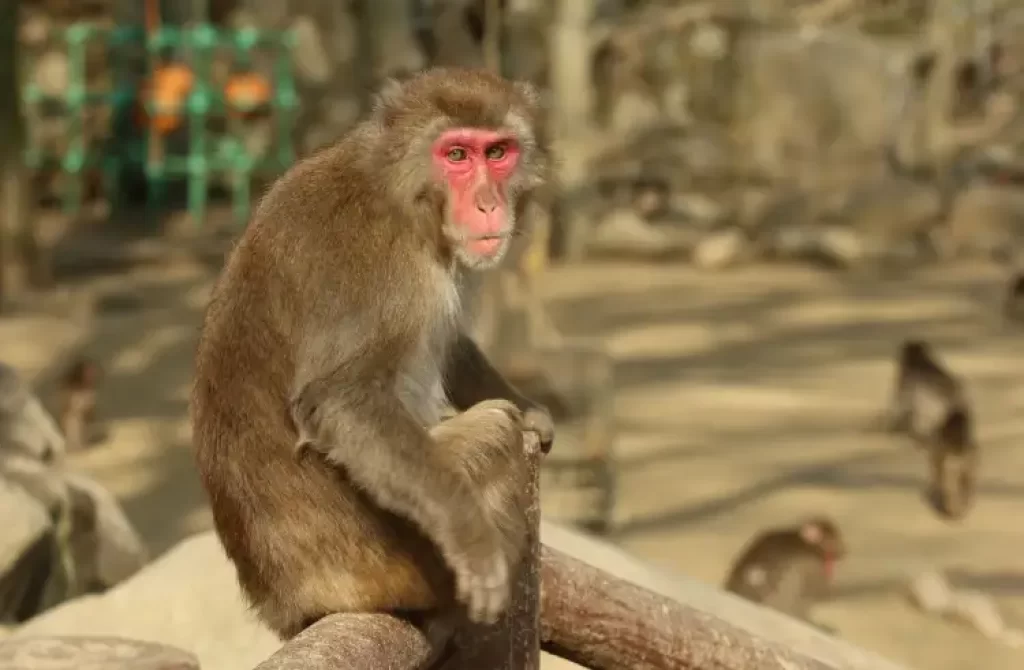
Adult monkeys are fully grown and may have established their own social networks and mating partners.
They are typically able to fend for themselves, although they may continue to rely on their group for protection and social support.
Old age
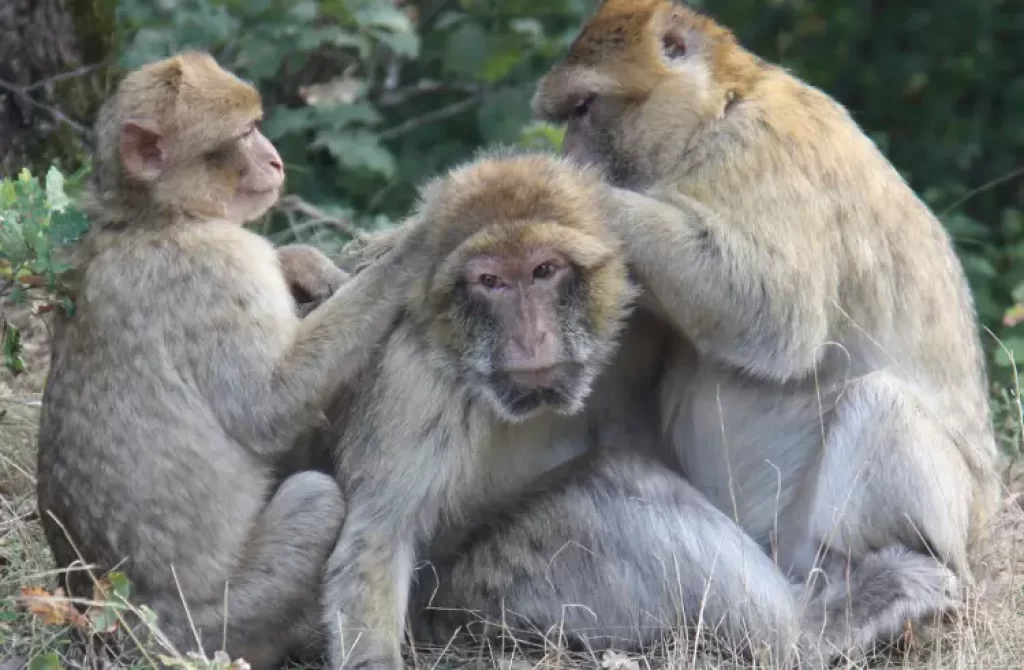
In old age, monkeys may begin to slow down and exhibit signs of aging, such as gray hair and decreased mobility.
They may also become less socially active and more withdrawn. Some species of monkeys, such as macaques, may exhibit age-related diseases similar to those seen in humans, such as Alzheimer’s disease and arthritis.
It’s worth noting that different species of monkeys may have different life spans and developmental patterns.
For example, larger species such as mandrills and howler monkeys may take longer to reach sexual maturity than smaller species like marmosets and tamarins.
Some species of monkeys may exhibit unique behaviors or social structures at different stages of their life cycle.
Prosimians: The Shortest-Lived “Monkeys”
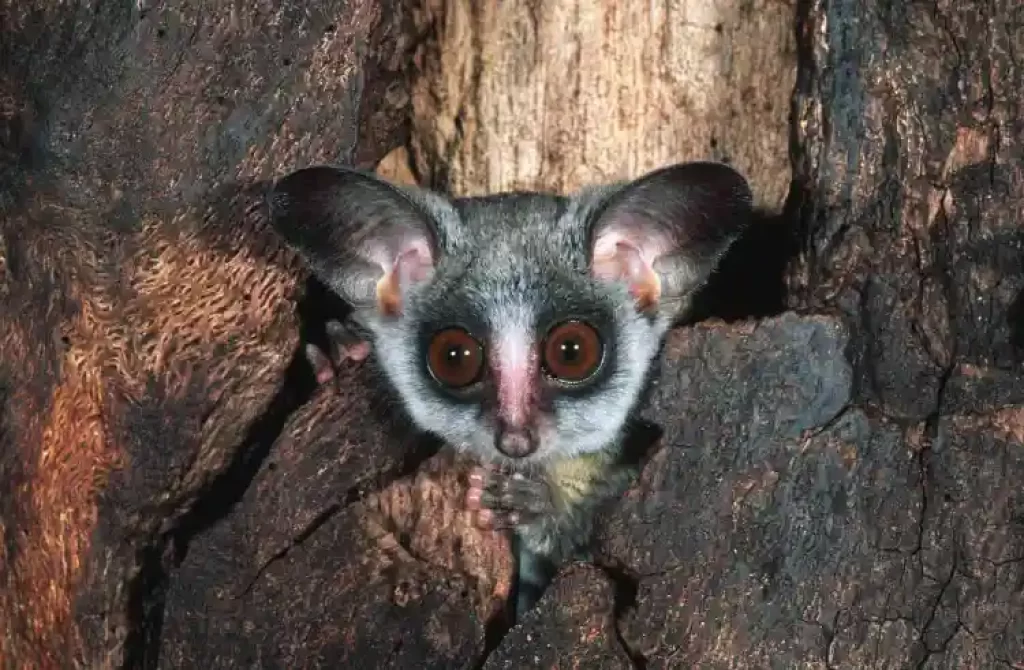
Prosimians are primates that are classified as members of the suborder Prosimii. This suborder includes several different groups of primates, including lemurs, lorises, bushbabies, and aye-ayes.
Prosimians are typically found in Africa, Madagascar, and Southeast Asia, and they are distinguished from other primates by their smaller body size and more primitive characteristics.
In general, prosimians have shorter lifespans than other types of primates, with many species living to only 10-20 years of age in the wild.
This is thought to be related to their smaller size, as well as the fact that they are often preyed upon by larger predators.
Many prosimians are dependent on particular habitats that are being threatened by habitat loss and other human activities, which can also contribute to their shorter lifespans.
Monkey Lifespan by Species
Monkeys are a diverse group of primates, and their lifespans can vary significantly depending on the species. Here are some examples of monkey species and their average lifespans:
Capuchin Monkey
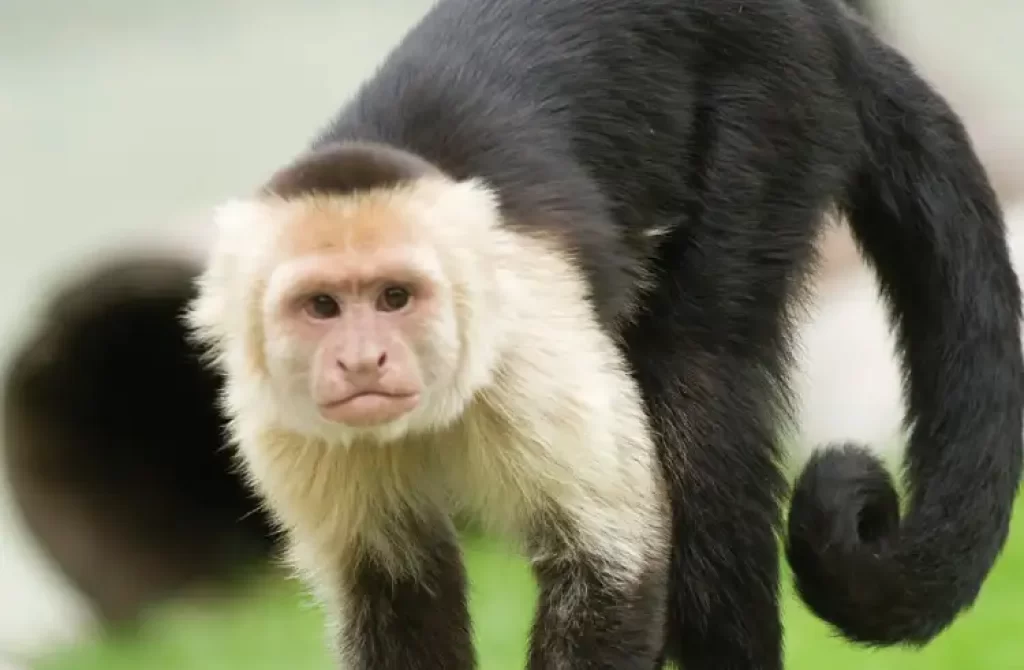
Capuchin monkeys are known for their high level of intelligence and their ability to use tools. These monkeys typically live for around 15 to 25 years in the wild, with some individuals living up to 35 years in captivity. Their diet primarily consists of fruits, insects, and small vertebrates.
Howler Monkey
Howler monkeys have an average lifespan of 15 to 20 years in the wild, with some individuals living up to 25 years. Females tend to live slightly longer than males, possibly due to their lower stress levels and higher social status.
However, their lifespan can be greatly affected by factors such as habitat loss, hunting, and disease. In captivity, howler monkeys have been known to live up to 30 years, with proper care and nutrition.
Mandrill
Mandrills have an average lifespan of around 20 years in the wild, with some individuals living up to 30 years. However, mandrills can live up to 40 years in captivity due to the availability of veterinary care and a controlled environment.
It’s worth noting that male mandrills tend to have a shorter lifespan than females, as they are more prone to injuries and conflicts within their social groups.
Squirrel Monkey
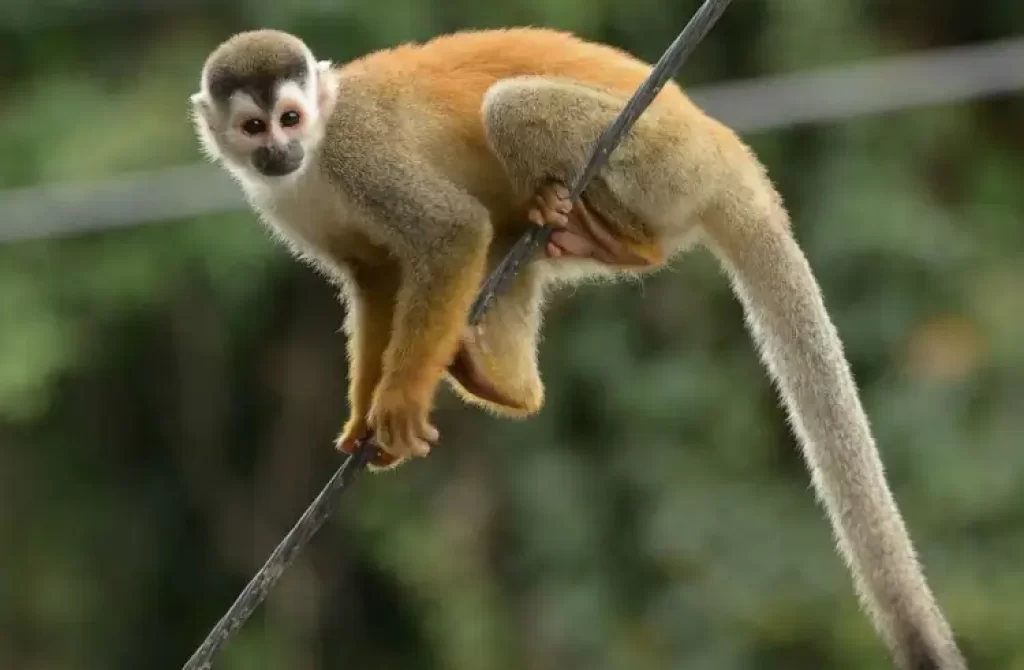
Squirrel monkeys are small primates found in Central and South America. They have an average lifespan of 15 to 20 years in the wild, but can live up to 25 years in captivity.
They are known for their high energy and acrobatic abilities, often jumping and swinging through the trees in search of food. Despite their small size, they are highly social animals that live in large groups of up to 500 individuals.
Spider Monkey
Spider monkeys have an average lifespan of 20 to 25 years in the wild. However, some individuals have been known to live up to 30 years in captivity. Like other primates, their lifespan can be influenced by various factors such as genetics, diet, and habitat.
The spider monkey’s diet, which consists mainly of fruit and nuts, is believed to contribute to their relatively long lifespan compared to other monkey species. However, habitat loss and hunting have threatened the survival of spider monkey populations, which in turn can impact their lifespan in the wild.
Tamarin
Tamarins, which are smaller New World monkeys, have an average lifespan of 12 to 16 years in the wild. However, tamarins that live in captivity tend to live longer, with some individuals living up to 20 years.
Like other primates, the lifespan of tamarins can be influenced by various factors such as diet, disease, predation, and human activities such as deforestation and hunting.
In the wild, tamarins are known to be susceptible to diseases such as yellow fever and malaria, which can significantly reduce their lifespan. However, captive breeding programs and conservation efforts have helped to increase the lifespan of tamarins in captivity.
Langur
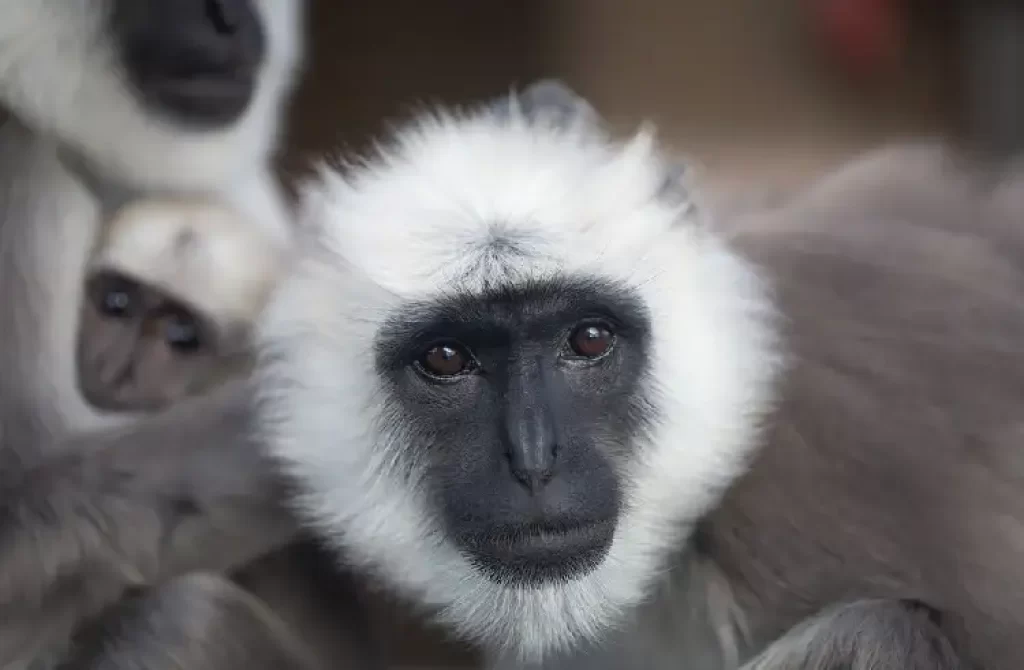
Langurs are known to have an average lifespan of approximately 20 years in the wild, although they can live up to 30 years in captivity. These primates are native to Asia and are known for their distinctive black and white coloring.
Langurs are herbivores and primarily eat leaves, fruits, and flowers. Like other monkeys, their lifespan can be influenced by factors such as habitat loss, hunting, and disease.
Baboon
Baboons are one of the longest-lived monkey species with an average lifespan of 20 to 30 years in the wild. However, with the protection and care provided in captivity, they can live up to 45 years. This longevity makes them a valuable model for studying aging and related diseases.
Vervet Monkey
Vervet monkeys typically have an average lifespan of 10 to 12 years in the wild, but this can vary depending on the environment and other factors. In captivity, they can live up to 24 years or more with proper care and attention.
These small to medium-sized monkeys are found throughout Africa and are known for their distinctive gray and black fur, as well as their loud vocalizations. They are omnivores, eating a diet of fruit, leaves, insects, and small animals.
Factors that Affect Monkey Lifespan
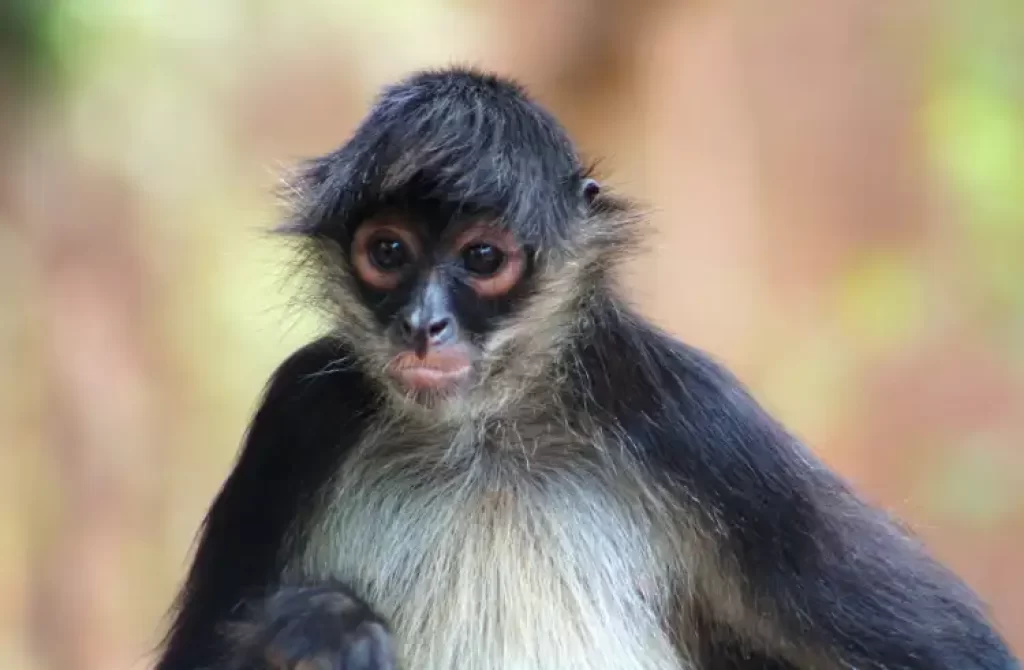
Monkey lifespan can be influenced by a variety of factors, such as diet, habitat, and social behavior. These factors can interact in complex ways to determine the overall health and longevity of a monkey population.
Diet and Nutrition
The type of diet and nutrition plays a crucial role in the lifespan of monkeys. The availability of food resources in the natural habitat of monkeys influences their diet and nutrition, which ultimately affects their lifespan.
Some studies suggest that a diet rich in fruits, nuts, and leaves can help increase the lifespan of monkeys. A study conducted on baboons showed that baboons who had access to a healthier diet had a higher lifespan than baboons who had access to a less healthy diet.
Conversely, a diet that lacks essential nutrients can lead to health problems and shorten the lifespan of monkeys. For example, a diet that is low in vitamin C can cause scurvy, a condition that affects the immune system and can lead to death.
Researchers study the relationship between diet and lifespan in monkeys by observing their feeding habits and analyzing the composition of their diets. They also conduct experiments where monkeys are given different diets to see how it affects their health and lifespan.
Habitat and Environment
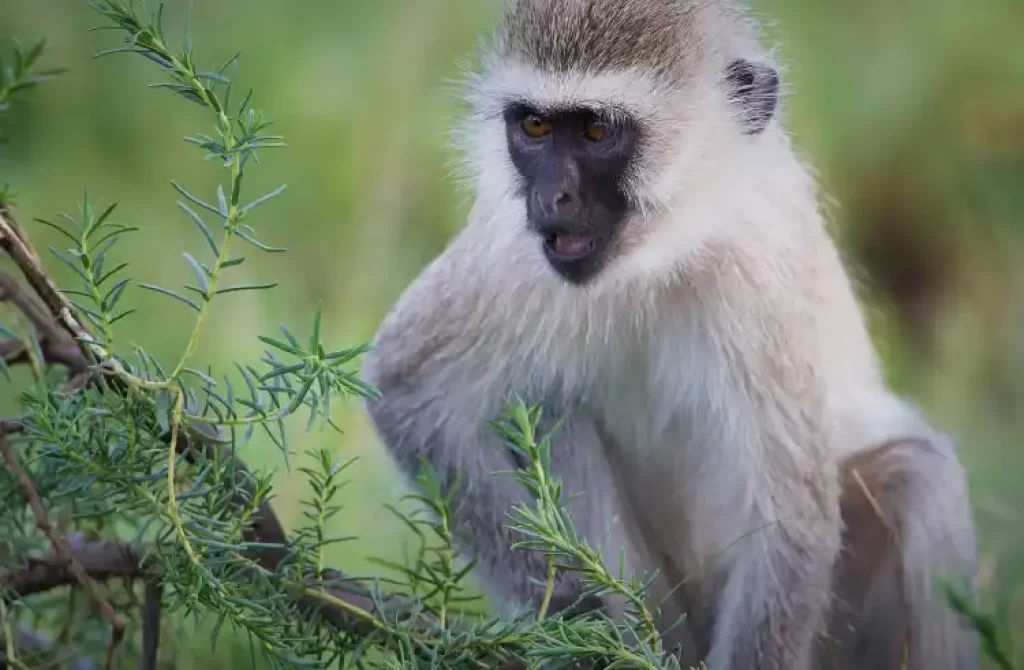
The habitat and environment in which a monkey lives can play a significant role in their lifespan. Monkeys that live in areas with abundant food, water, and shelter may have longer lifespans than those in more challenging environments.
For example, a study published in the American Journal of Primatology found that female baboons living in environments with more food resources had longer lifespans than those in environments with fewer resources.
Other environmental factors, such as temperature and climate, can also affect monkey lifespans. For example, some monkey species that live in colder climates have been known to have shorter lifespans than those in warmer regions.
Researchers study the relationship between habitat and lifespan in monkeys through field observations and experiments. They may track monkeys over time, monitoring their health and behavior in different environments.
They may also manipulate certain environmental factors, such as food availability, to see how it affects monkey lifespan.
Some examples of environmental factors that have been linked to longer or shorter monkey lifespans include:
- Food availability
- Water availability
- Shelter availability
- Temperature and climate
- Predation pressure
- Human disturbance
Social behavior and stress
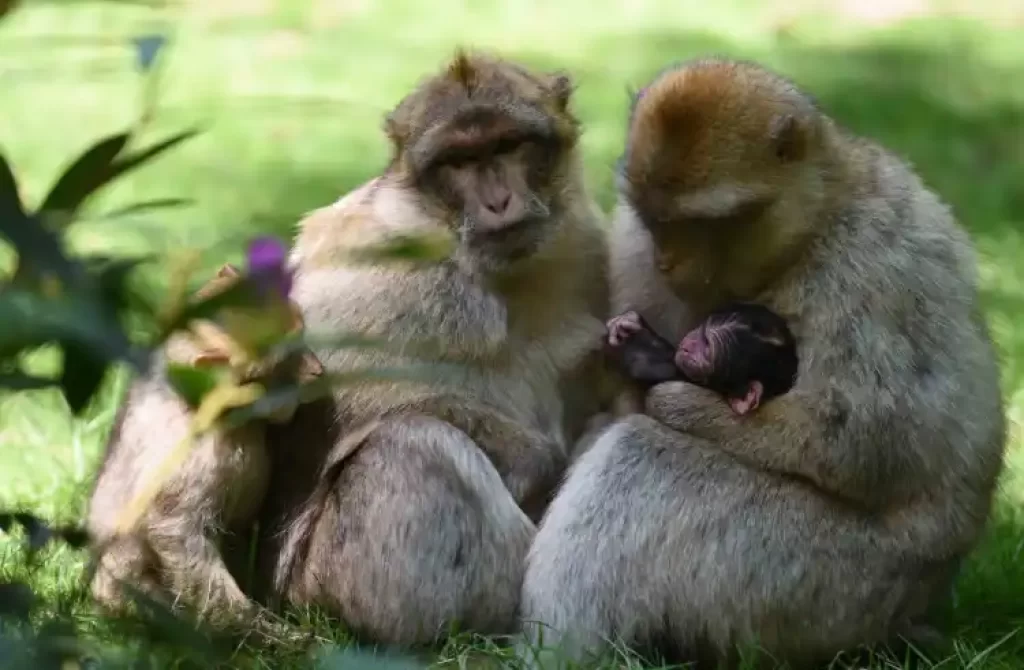
Social behavior and stress can also play a significant role in determining how long a monkey will live. Monkeys are social animals that live in complex societies, and their social interactions can have both positive and negative effects on their health and wellbeing.
Stressful social situations, such as aggression or competition for resources, can lead to increased levels of cortisol, a hormone associated with chronic stress.
Over time, chronic stress can weaken the immune system and increase the risk of illness and disease, ultimately shortening the lifespan of the monkey.
On the other hand, positive social interactions, such as grooming and social bonding, can have a protective effect on monkey health and increase lifespan.
For example, a study of captive rhesus macaques found that monkeys who had stronger social bonds with their groupmates had lower levels of cortisol and lived longer than those with weaker social bonds.
Other social factors that can influence monkey lifespan include dominance hierarchy, mating strategies, and group size. In some monkey species, dominant individuals have better access to resources and may have longer lifespans as a result.
Similarly, certain mating strategies, such as monogamy or polygyny, may be associated with longer or shorter lifespans depending on the species. Group size can also be an important factor, as larger groups may have more competition for resources and higher levels of stress.
Random fan fact: Monkeys have been observed using tools in the wild, such as using rocks to crack nuts or using sticks to extract insects from tree bark.
Are monkeys and apes the same?
No, monkeys and apes are not the same. While they both belong to the primate family, there are some key differences between them. Monkeys generally have tails, while apes do not. Apes also have larger brains relative to their body size, and are capable of more complex cognitive abilities than monkeys.
Additionally, apes are generally larger in size and have a more upright posture. Some examples of apes include chimpanzees, gorillas, and orangutans, while some examples of monkeys include macaques, marmosets, and capuchins.
What is the lifespan of a monkey in captivity?
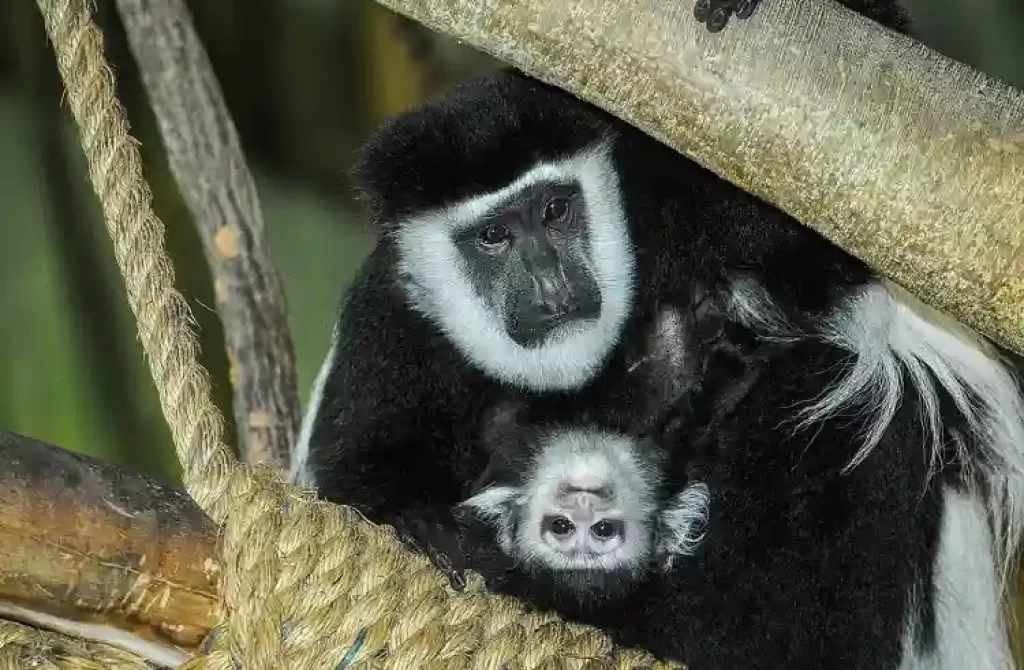
The lifespan of a monkey in captivity varies depending on the species, but generally, they can live longer than their counterparts in the wild. Some species, such as the macaque, can live up to 30 years in captivity, while others, such as the chimpanzee, can live up to 60 years or more.
Fun fact: Wild chimpanzees can live longer than their captive counterparts, with the oldest known wild chimpanzee living up to 63 years. A recent study found that captive chimpanzees have an average lifespan of 33 years.
Why do monkeys live longer in captivity?
Monkeys can live longer in captivity due to several reasons, including regular access to food, protection from predators, and medical care. Additionally, captivity can reduce the environmental stressors that monkeys may experience in the wild, such as competition for resources and exposure to diseases.
However, it’s important to note that captivity can also present its own set of challenges and ethical concerns, including the potential for social isolation and psychological stress.
Conclusion
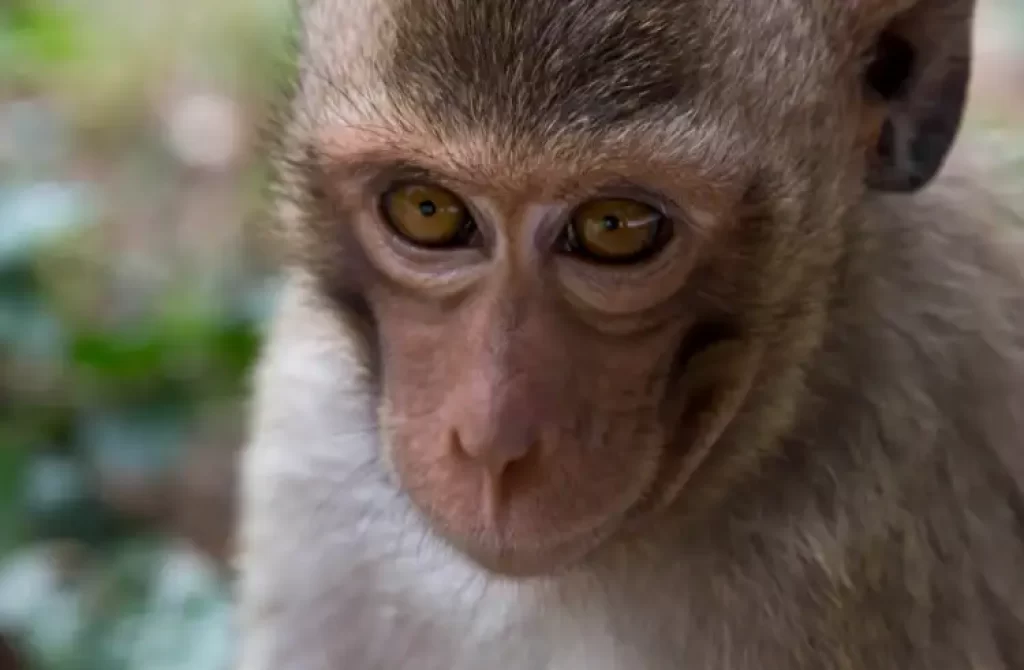
The lifespan of a monkey varies greatly depending on the species, as well as other factors such as diet, habitat, and social behavior. While some monkeys may live as short as 10 years, others can live up to 40 years or more.
The life cycle of a monkey also follows a similar pattern to that of other primates, with infancy, childhood, adolescence, adulthood, and old age.
During each stage, monkeys experience significant physical and behavioral changes that help them adapt to their environment and social group.
Additional Resources
For those interested in learning more about monkeys and their lifespan, there are numerous books and audiobooks available on the subject. Some examples include:
- “Primates: The Fearless Science of Jane Goodall, Dian Fossey, and Biruté Galdikas” by Jim Ottaviani and Maris Wicks
- “The Monkey Wars” by Deborah Blum
- “Monkeyluv: And Other Essays on Our Lives as Animals” by Robert M. Sapolsky
- “Baboon Metaphysics: The Evolution of a Social Mind” by Dorothy L. Cheney and Robert M. Seyfarth
- “In the Shadow of Man” by Jane Goodall
- “My Life with the Chimpanzees” audiobook by Jane Goodall and Grand Central Publishing
These resources provide insights into the lives of monkeys, including their behavior, social structure, and lifespan, as well as the work of scientists who have dedicated their lives to studying these fascinating animals.
Frequently asked questions (FAQ) about monkeys
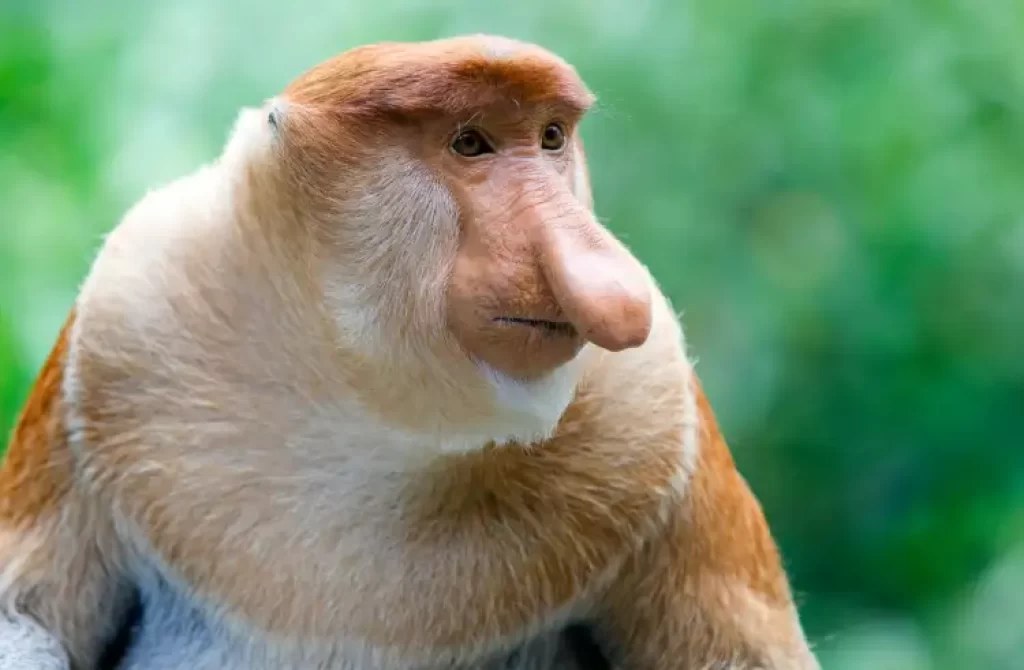
Q: What is a monkey?
A: A monkey is a type of primate that belongs to the suborder Haplorhini, which also includes apes and humans. Monkeys are typically smaller than apes and have tails.
Q: Where do monkeys live?
A: Monkeys can be found in a variety of habitats, including tropical rainforests, savannas, and mountains. They are native to Africa, Asia, and Central and South America.
Q: What do monkeys eat?
A: Monkeys are omnivores, which means they eat both plants and animals. Their diet can include fruit, leaves, insects, and small animals like birds and rodents.
Q: How long do monkeys live?
A: The lifespan of a monkey can vary depending on the species. Some monkeys may only live for 10-15 years in the wild, while others can live up to 40 years in captivity.
Q: Do monkeys make good pets?
A: No, monkeys do not make good pets. They are wild animals that require specialized care and attention. Keeping a monkey as a pet can be dangerous for both the monkey and the owner.
Q: Are monkeys endangered?
A: Yes, many species of monkeys are endangered due to habitat loss, hunting, and other factors. It is important to protect their natural habitats and work towards conservation efforts to ensure their survival.
Q: Do monkeys use tools?
A: Yes, some species of monkeys are known to use tools. For example, capuchin monkeys use stones to crack open nuts and sticks to probe for insects.
Q: Can monkeys communicate with humans?
A: Monkeys have their own complex forms of communication, including vocalizations, body language, and facial expressions. While they cannot speak human languages, some species of monkeys have been taught to communicate with humans through sign language or other means.
Q: Are all monkeys social animals?
A: Yes, most species of monkeys are social animals that live in groups. They have complex social structures and engage in a variety of social behaviors, such as grooming and play.
Q: Are monkeys dangerous?
A: Monkeys are wild animals and should be treated with caution and respect. While some species of monkeys may be more aggressive than others, it is important to avoid provoking them and to keep a safe distance. In general, it is best to observe monkeys in their natural habitats or in accredited zoos or wildlife sanctuaries.
